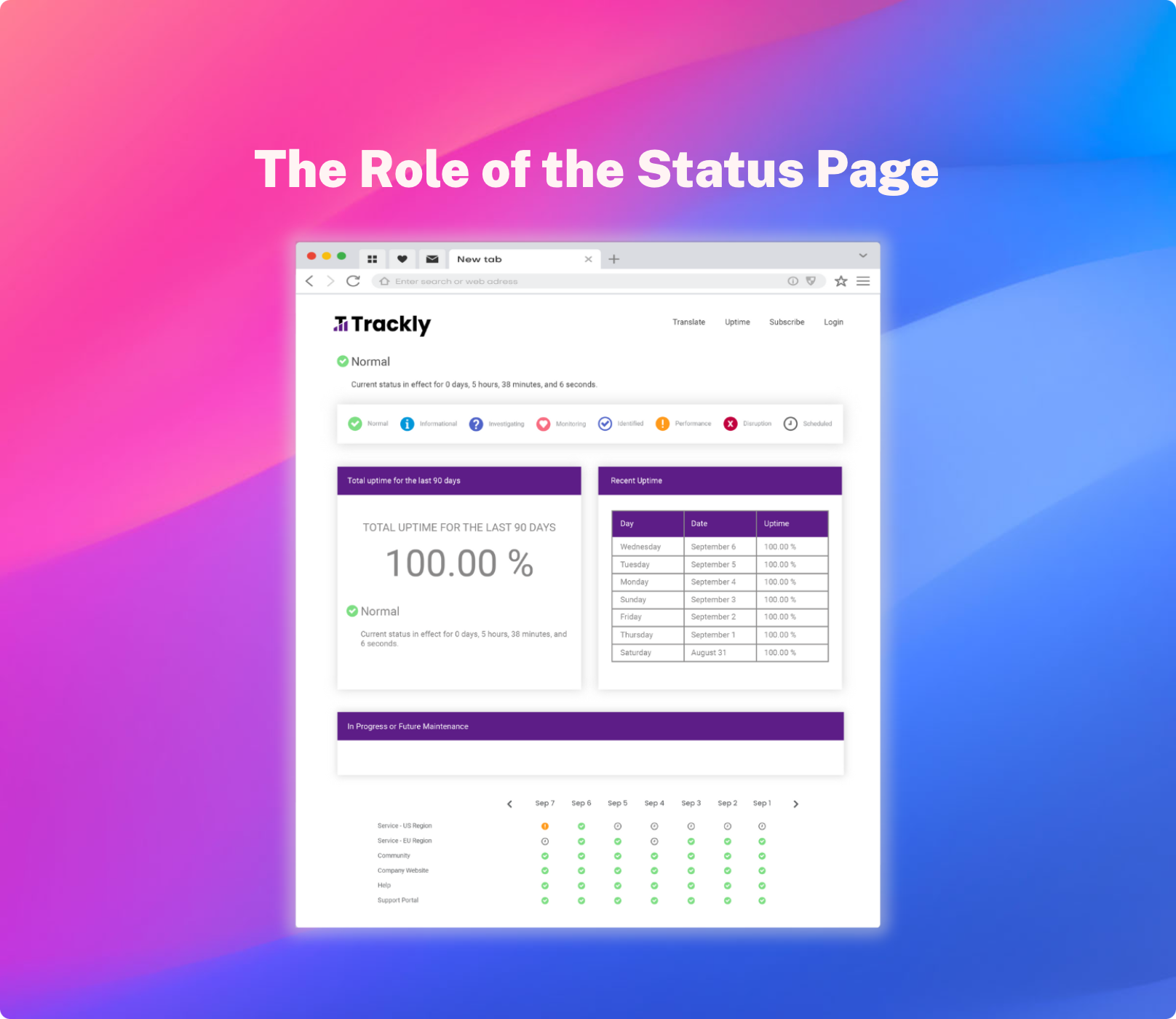If 2020 taught us anything, it is that a corporate Status Page is an IT ‘must have.’ With this one solution, IT leaders are able to address new challenges of remote work teams, as well as traditional issues — like high IT support costs, employee productivity, stakeholder transparency and IT team efficiency.
2020 was a year marked by the ‘virtualization’ of nearly every aspect of life. From doctor’s appointments to happy hours, we quickly moved live events to online environments like Zoom and Google Hangouts. Never was this truer than for corporate teams who were used to working in office buildings.
As professional teams transitioned to virtual work, companies faced a plethora of new challenges. Not only did they have to setup virtual work environments with the right tools for the job; but also, they had to determine how to keep their employees engaged, communicate with teams effectively and ensure a high level of employee productivity with remote work.
These new remote work challenges, along with traditional issues that weigh heavy on IT leaders’ minds — are improved with a corporate Status Page solution.
Top 5 Reasons You Need a Corporate Status Page
Reason #1
Reduced IT Help Desk Support Costs
If you have ever worked in a corporate environment, you surely have experienced the following scenario: You log into your laptop to start your day and find that Office 365 is not working. You, along with hundreds of your co-workers, call your IT help desk to report the problem and suddenly your IT support team is overloaded with too many support requests for the same issue.
IT support tickets cost on average $104. When you add this expense to the opportunity cost of employees and IT teams being less productive, you can see how much IT support tickets impact the bottom line of the business. By implementing a corporate Status Page, organizations can reduce inbound help desk costs by preventing the rise in incidents from happening in the first place.
IT leaders are able to save themselves the headache and cost that a surge in help desk requests creates by using proactive communication as one of the outage communication best practices and planned maintenance to employees as well as customers.
How much you can save in IT support costs with a corporate Status Page?
Reason #2
Higher Employee Productivity
Employee productivity is always a concern — whether your teams are in-office or working remotely. According to the 2015 HIS Markit study, North American companies lose up to $700 billion a year related to IT outages. This includes a 78% loss in employee productivity.
The total revenue loss from employees’ inability to access core systems during outages marks only the start of the negative domino effect. If the impacted employees also play customer-facing roles, the outage can impact customer service, sales, customer support and other customer-oriented business functions.
To protect against outages and resolve them quickly, many corporations have turned to corporate Status Pages to provide proactive and integrated incident management communications. By integrating all IT notifications into one interface and being proactive in sharing information with both internal and external stakeholders, IT teams are freed up from the flood of calls and emails they receive without a corporate Status Page. This ‘free’ time can be applied to resolving the problem at hand versus recording yet another ticket for the same issue.
Another way a corporate status boosts employee productivity is in the area of communicating planned maintenance information. By knowing in advance when maintenance will be performed, employees can better plan their workday, focusing on off-line tasks during the time when systems are unavailable. This ability to adjust their workday according to system availability means teams are using their time more wisely and are thus being more productive.
Learn More About Communicating Scheduled Maintenance With Users
Reason #3
Greater IT Transparency
According to business.com, companies that embrace transparency as a core business value find that it leads to consumer trust, loyalty and business success. And why not? Transparency fosters trust, and trust is important for the health of every relationship – both personal and professional.
According to the Label Insight Transparency ROI Study, at least two-thirds of consumers would spend more if it meant buying from a transparent company and 94 percent rank transparency as the greatest factor in brand loyalty. In addition, Harvard Business Review notes that obtaining a new customer is anywhere from five to 25x more expensive than retaining an existing one.
Company transparency is also of utmost importance to employees. In fact, Forbes notes that employees indicate that transparency is the number-one factor in determining employee workplace happiness.
A corporate Status Page goes a long way toward providing IT transparency to both internal and external stakeholders. By providing proactive incident management and planned maintenance communications, a corporate Status Page helps boost stakeholder trust, which in-turn leads to better customer and employee satisfaction.
Discover best practices in IT incident management communications
Reason #4
Improved IT Team Efficiency
By implementing a corporate Status Page, you not only free up your IT team to focus on higher value tasks, but, assuming your Status Page supports unified communication, you are also making your IT team more efficient in performing their tasks. Instead of spending considerable time using multiple notification interfaces across myriad IT apps and systems, with a corporate Status Page, IT teams use a dashboard that integrates all incident management notifications into one customizable dashboard.
Modern status page providers are able to fully integrate with all your external third party SaaS products. They can ingest their status in real-time and proactively forward new incidents to your IT team or directly to your employees. Imagine the time saved by a system that automatically notifies your employees of the next Office365 or AWS outage.
StatusCast integrates with Office 365, big three cloud providers and corporate enterprise apps
Reason # 5
Remote Work Benefits
SocialChorus and Pulse recently “surveyed 100 global enterprise IT leaders to uncover how they are prioritizing employee engagement and communications improvements…and the top technology features that would help them derive greater ROI from their digital employee experience investments.” 93% of IT leaders who participated in the survey said that employee engagement and communication is a higher priority initiative in 2020 as a result of the rise in remote work. In addition, 49% of these leaders agree they would “be able to better calculate ROI…and boost productivity with a unified view of analytics across all tools and platforms.”
A corporate Status Page addresses these IT leaders’ needs with one unified view of all incident management notifications. IT teams as well as other employees can be more efficient and productive, IT leaders are better able to perform ROI analyses and employee engagement and communication get a boost — all because of a corporate Status Page.
Summing it Up
As 2020 draws to a close and we look toward a new year, IT leaders are advised to consider investing in a corporate Status Page. With this one solution, IT teams are able to do their best work while at the same time reducing IT support costs, boosting employee productivity, improving IT transparency and addressing the unique needs of remote workers.
Founded in 2013, StatusCast is a unified communications cloud-based platform that allows IT to easily communicate status and scheduled maintenance messages to its end-users with a powerful application status page. Want to see how a status page can benefit your business? Start your 14-day free trial or schedule a demo today!






